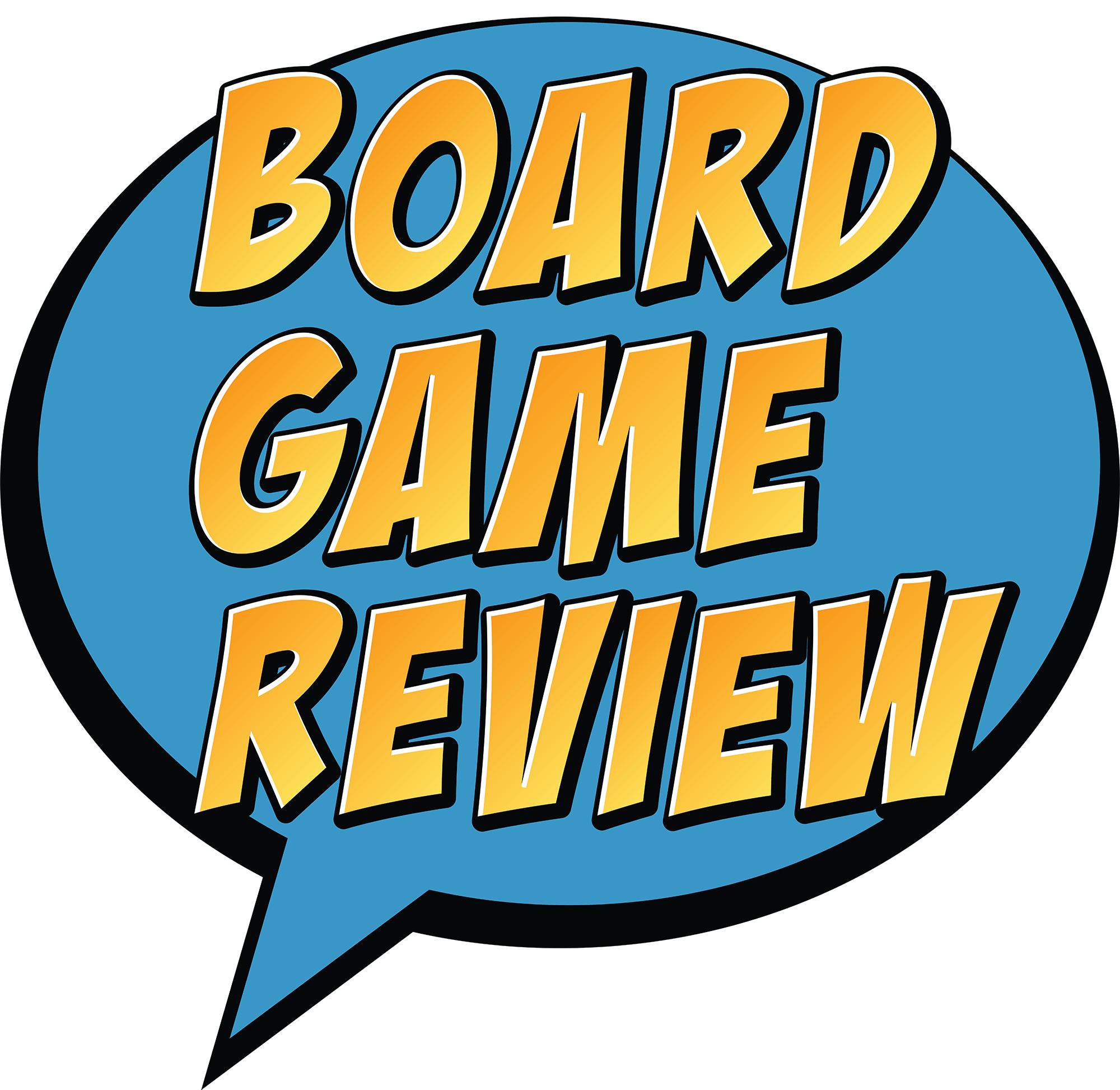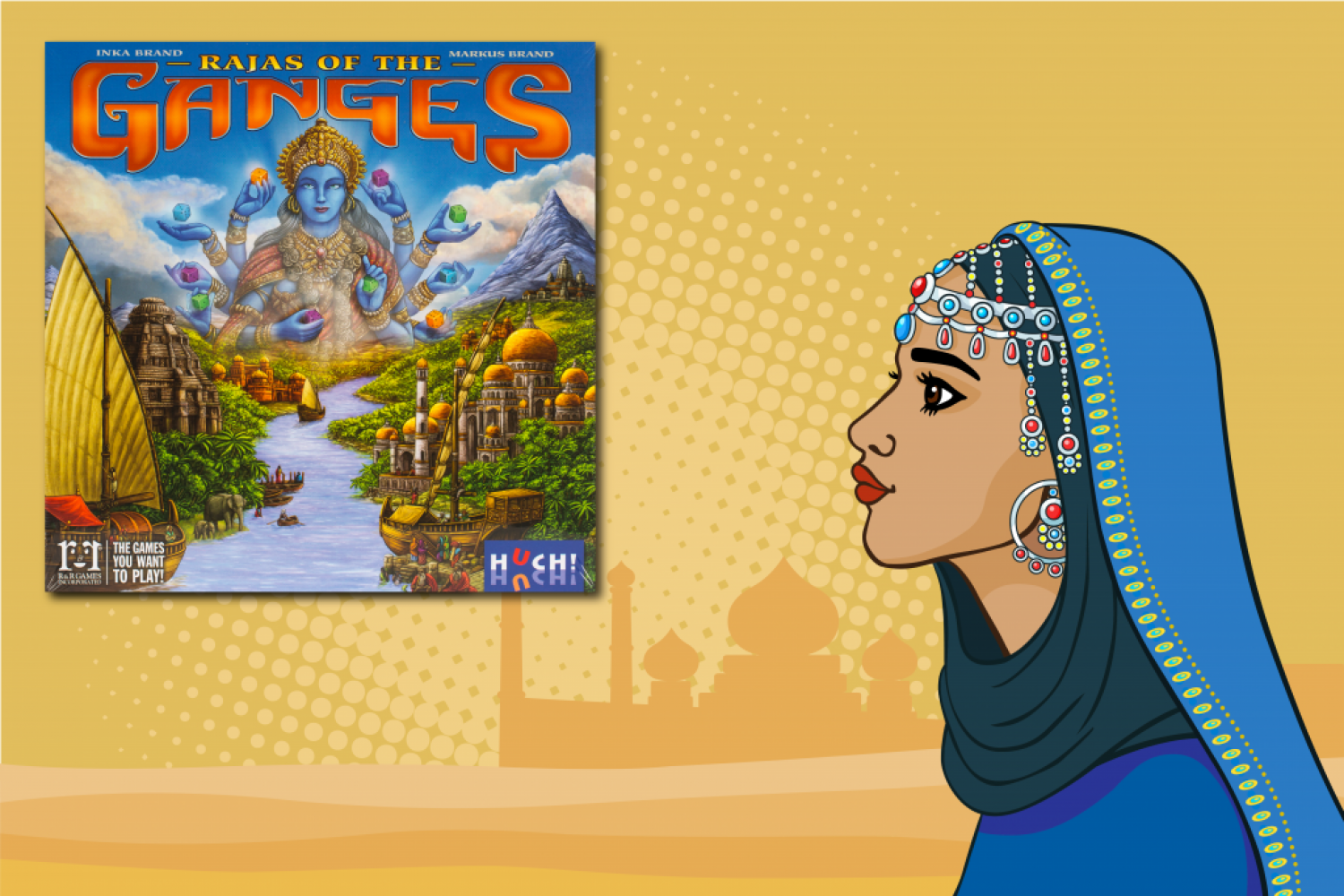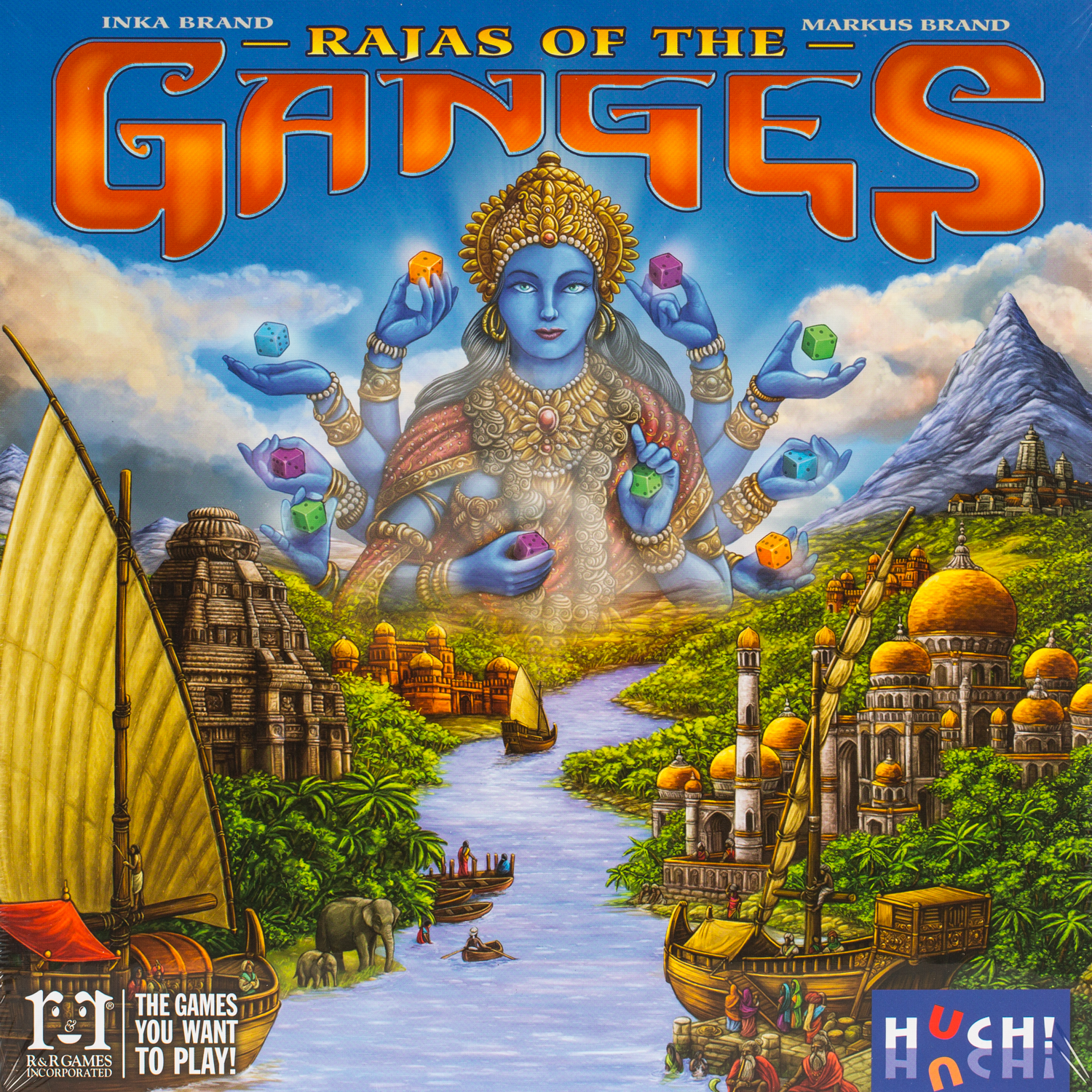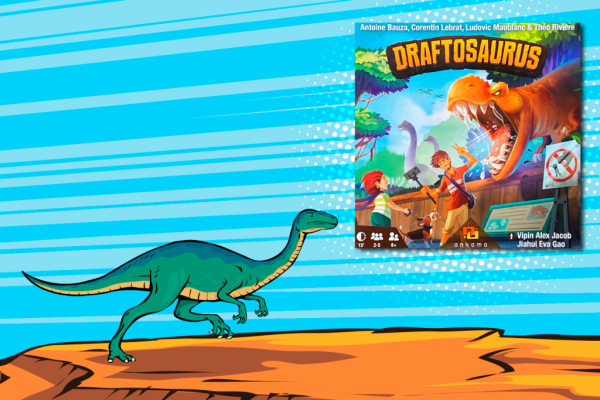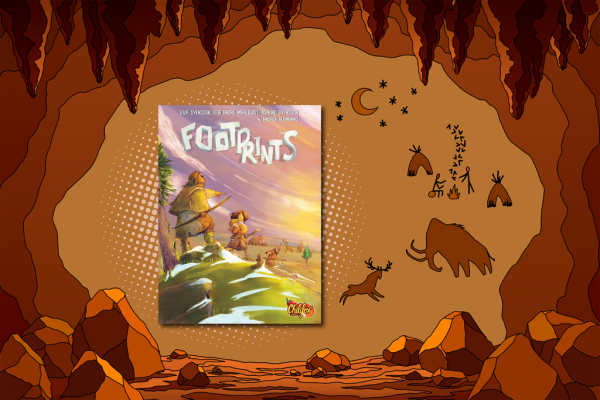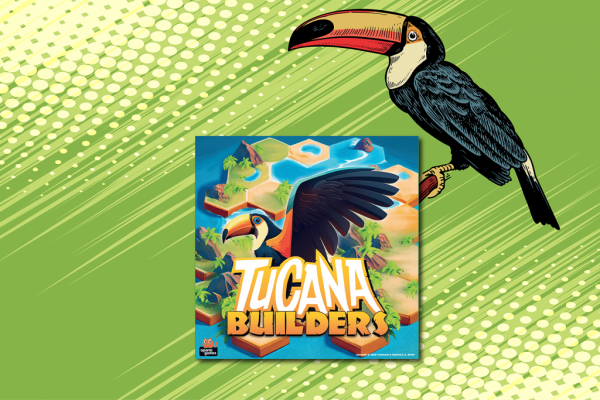Rajas of the Ganges Review
Set at the peak of the Mogul empire on the banks of the most sacred river in India, Rajas of the Ganges is a dice worker placement game released in 2017. That’s right I am once again bringing you the latest hotness, just six years too late! Designed by Inka and Markus Brand, a duo perhaps better known for their Exit: The Game range.
As regular readers of my reviews know, I quite often pair board games to music, like a sommelier pairing wine to menu dishes. Before I even reach for Rajas of the Ganges from the shelf, Kula Shaker’s Govinda is playing in my head. You’re here for a review not a music lesson… so on with the mixtape, I mean review…
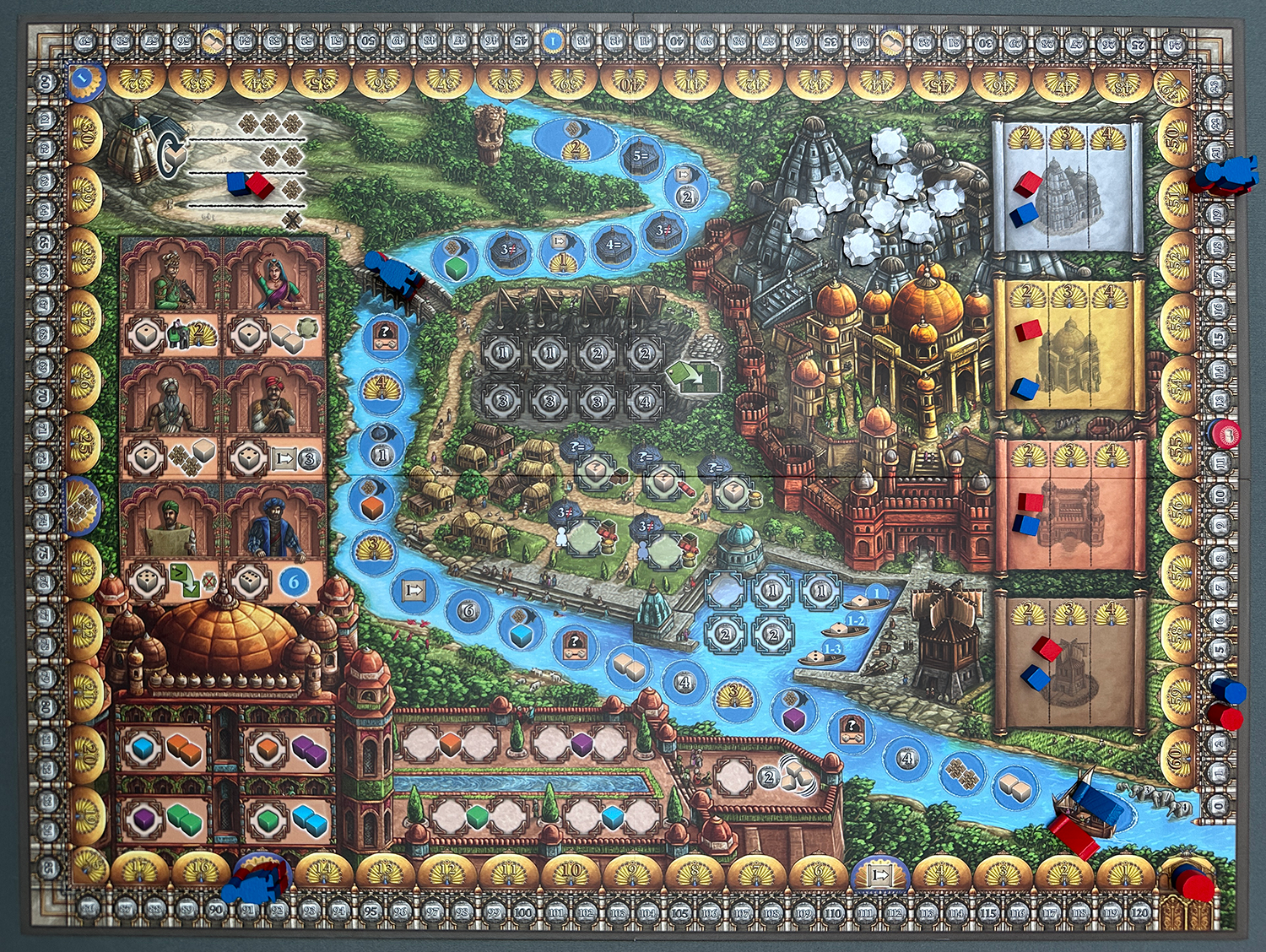
©boardgamereview.co.uk
Setup
There is a board to spread out centrally between all players. Sort the province tiles by their colour and then again by their animal backs, flip them over so you have twelve stacks of face up tiles.
Players will receive a Province board, a dice-holding Kali statue and tokens of their preferred colour. They will then need to place their relevant pieces on the board. Add the yield tokens onto the board too. Each player then takes one of each colour dice and rolls them, placing them on Kali.
There are some mini expansions or game variants included in the box and set up can differ slightly when playing with those.
There is a bit to sort out at the start of the game, but it doesn’t take long.
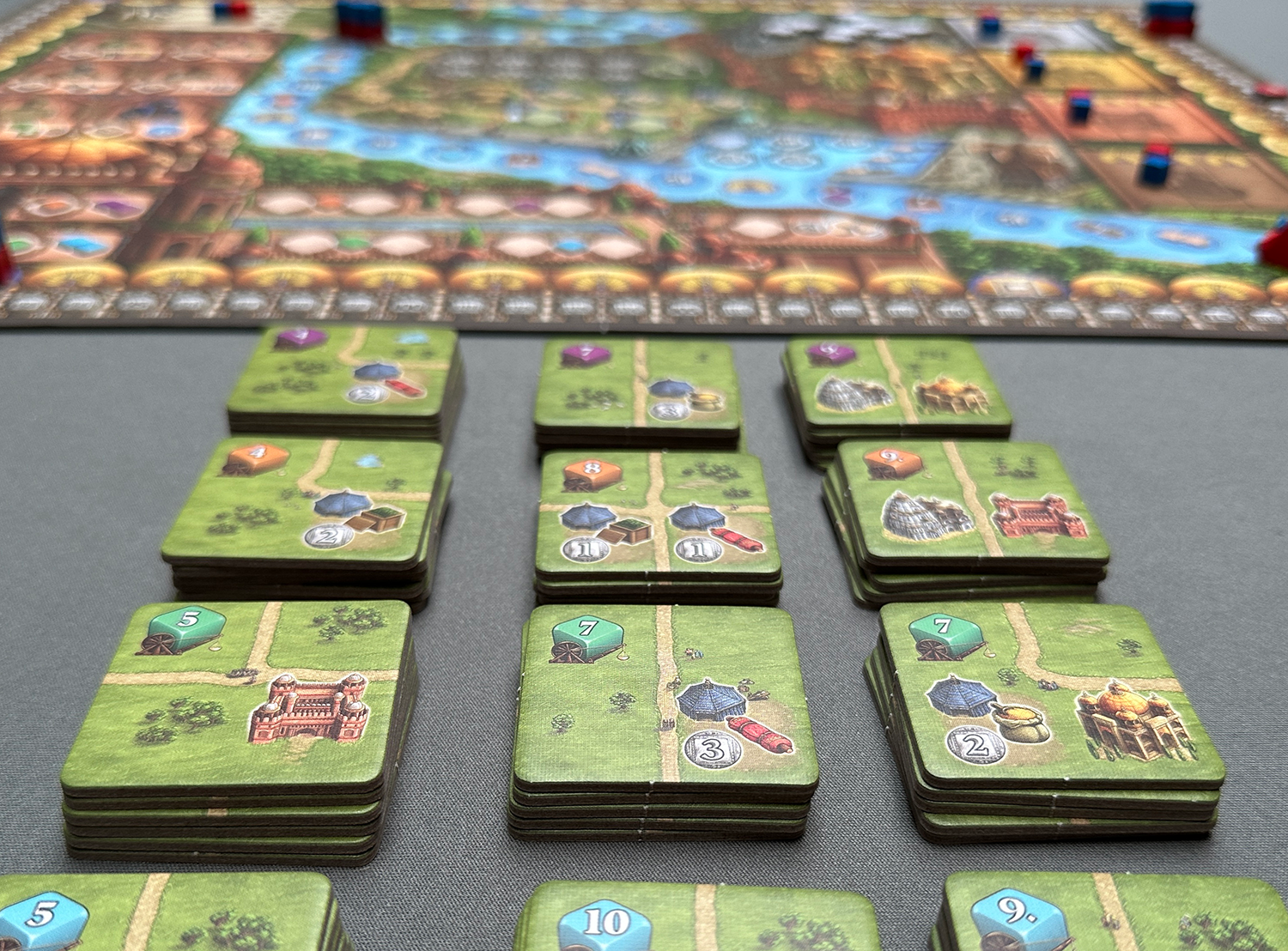
©boardgamereview.co.uk
Gameplay
In its simplest form Rajas of the Ganges is a race for points. A player will win the game if their wealth track which moves anti-clockwise crosses their fame track which moves clockwise, around the edge of the board.
Although you will place workers on the board, most spaces cost a specific die to visit.
The board is divided into different areas. The Chambers with the characters on, give different benefits depending on what dice you use. These vary from claiming the first player token, to gaining more dice, yield token bonuses or karma points. The Palace below allows you to convert, gain or reroll dice. The Quarry allows you to purchase a tile with specific coloured dice matching the cost on the tile. These are then placed on your Province board gaining fame and/or wealth. Once you have placed some tiles, the Market Place might be beneficial to sell wares matching the symbols on your tiles for money. Finally, the harbour allows to move up the river and grants handy one-off bonuses where your ship stops.
Also on the board is a karma tracker, you can spend these to flip a die to its opposite side and tracks to increase the fame of constructing different buildings when you place tiles into your province with matching symbols.
You will also unlock additional workers throughout the game which help ramp up the game time.
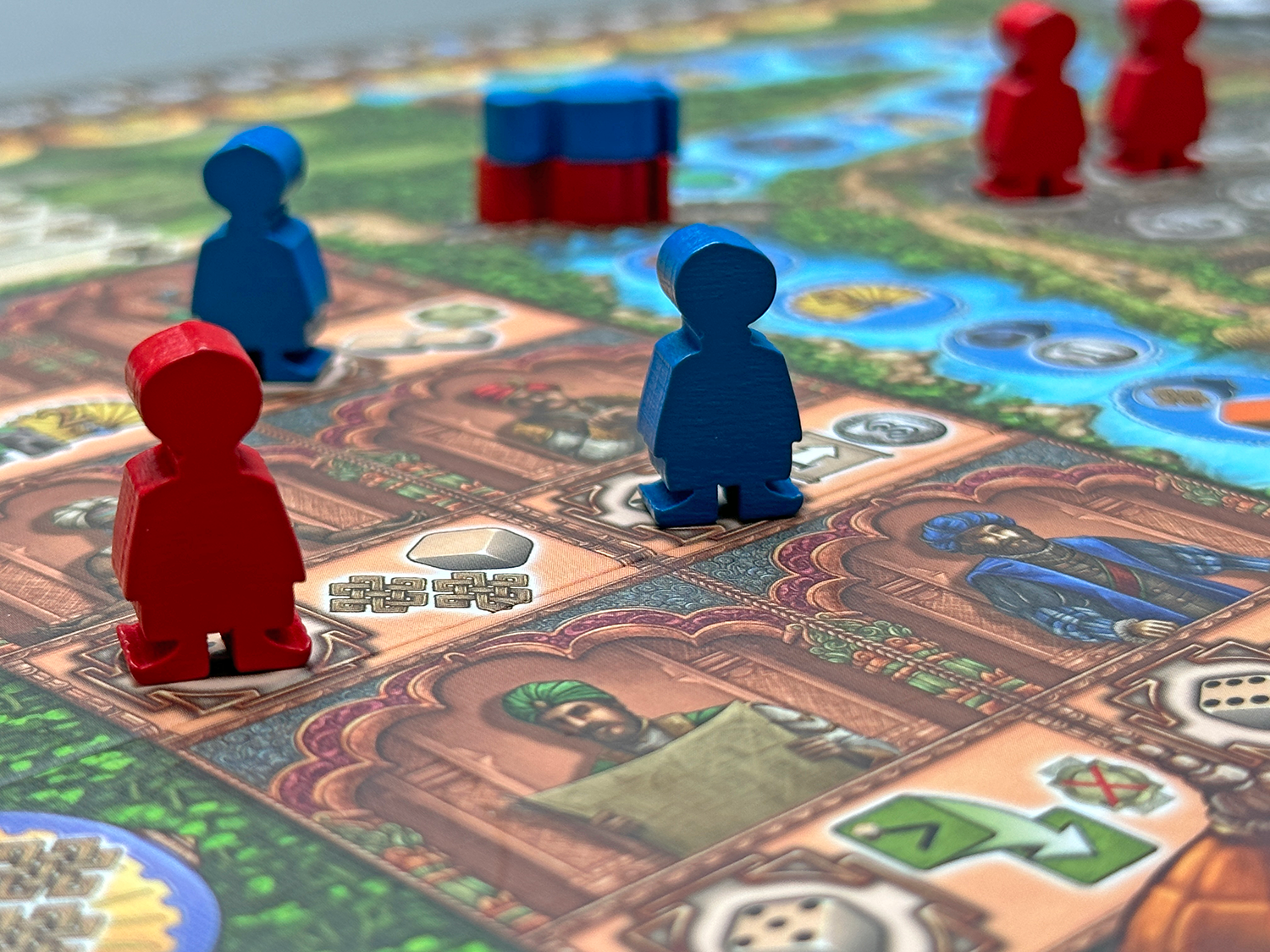
©boardgamereview.co.uk
Variants
I have mostly played the vanilla version of Rajas of the Ganges, but I have tried the so-called Navaratnas version to mix it up. It changes things like the number of dice you can store, or upgrade the yield tokens to ones you can choose. It also flips your province board to the advanced side too. Whereas, the Ganga Module modifies the spaces on the river. There is also a variant that can help handicap more seasoned players against newcomers to the game.

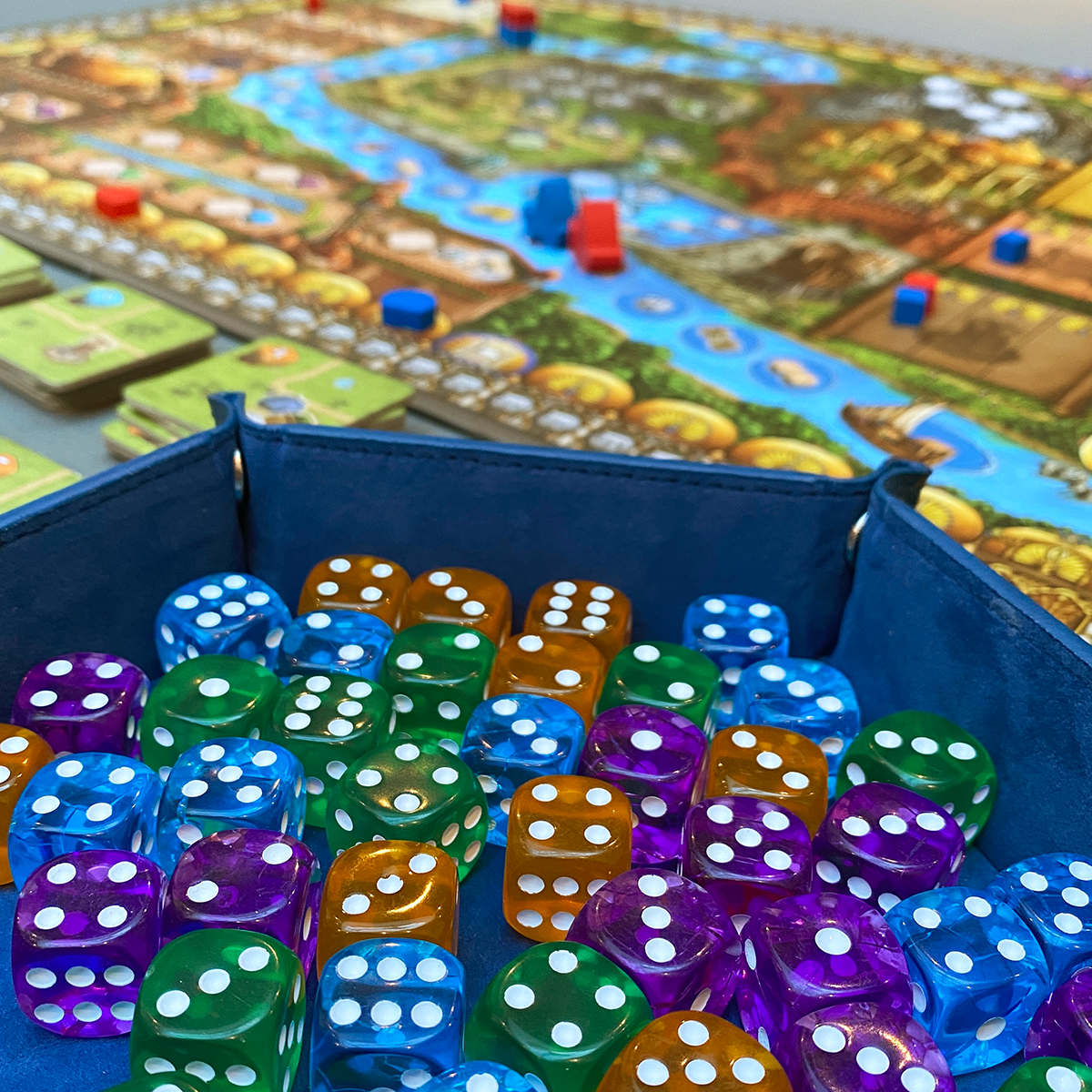
©boardgamereview.co.uk
What it’s like
While you can and will spend wealth, dice are the most important resource of the game. Most spaces on the board will see you profiting from one die maximum. Although the game tricks you into thinking you get two dice from some spaces, you will have paid a die to activate that space. Dice are important because you will need them for almost every square on the board or to build tiles on your personal Province board. With tiles often costing a couple of dice, the challenge of keeping your dice supply high is tricky.
What I have always admired in Rajas of the Ganges is how beautifully balanced the pip values are. Throughout the course of the game you will find yourself ebbing and flowing between wanting higher and lower value dice. Generally the board is better with lower pip values, but the better building tiles tend to be a higher cost and thus higher rolls are beneficial. Of course rolling dice does add an element of luck. There are times you are hoping to see a certain roll and may or may not see it. More often than not however, there are ways to utilise most rolls, they just may not be as optimum as you would like.
The worker placement is tight too, with many areas having just one space. Competition for these can be high, and you will find yourself looking at what dice the other players have before deciding where your attention should focus. Stealing the first player token can be more advantageous than in some other games.
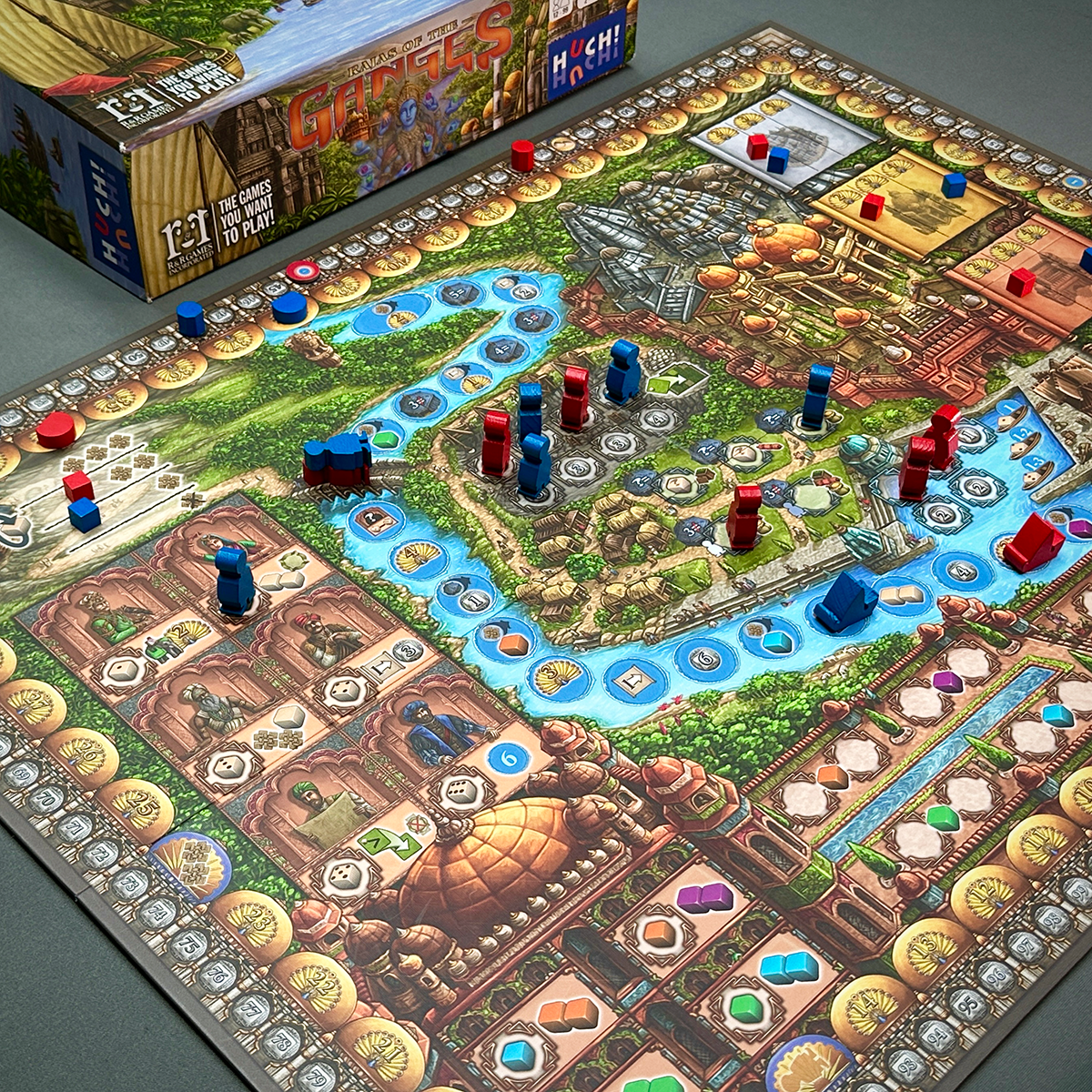
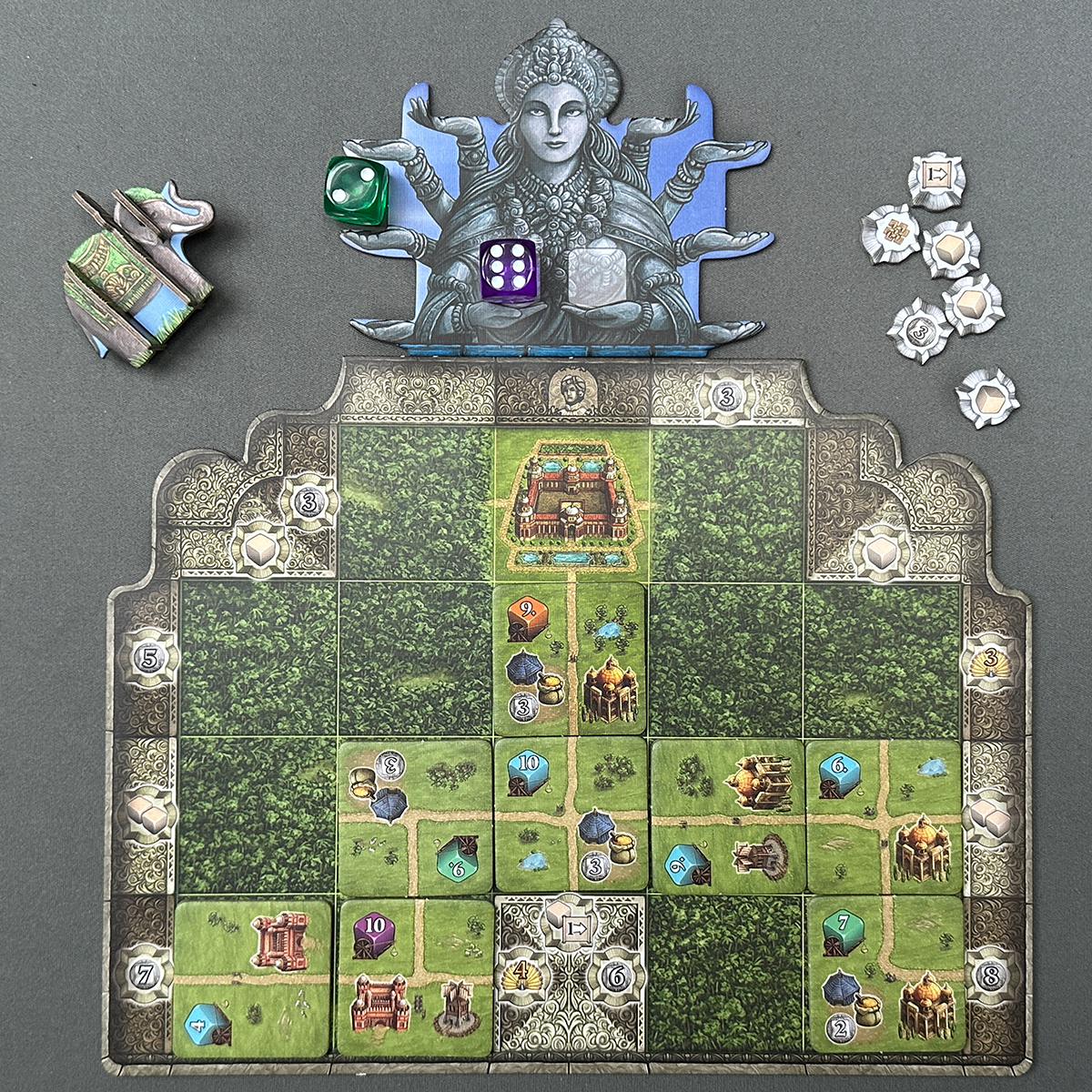
©boardgamereview.co.uk
At the start of the game, it feels like you are not doing much on your turn, spending a coin to get three coins on a bonus tile, or paying a dice to get two dice. As more meeples get unlocked the game speeds up and it becomes a nail biting race for fame and wealth. This can take players by surprise if they are not used to the fast pace. It is very tempting to blissfully build a beautiful network on your Province boards. This is important, but at some point you have to look at how you can make that last minute dash to cross the line. In many two player games, the defeated opponent would be left saying the immortal words ‘if I just had one more turn…’ which highlights the importance of making every move count.
There is a lot to take in and learn, but it clicks quite quickly. I often find the Market area the trickiest to translate, but I’ve played it enough to articulate it now.

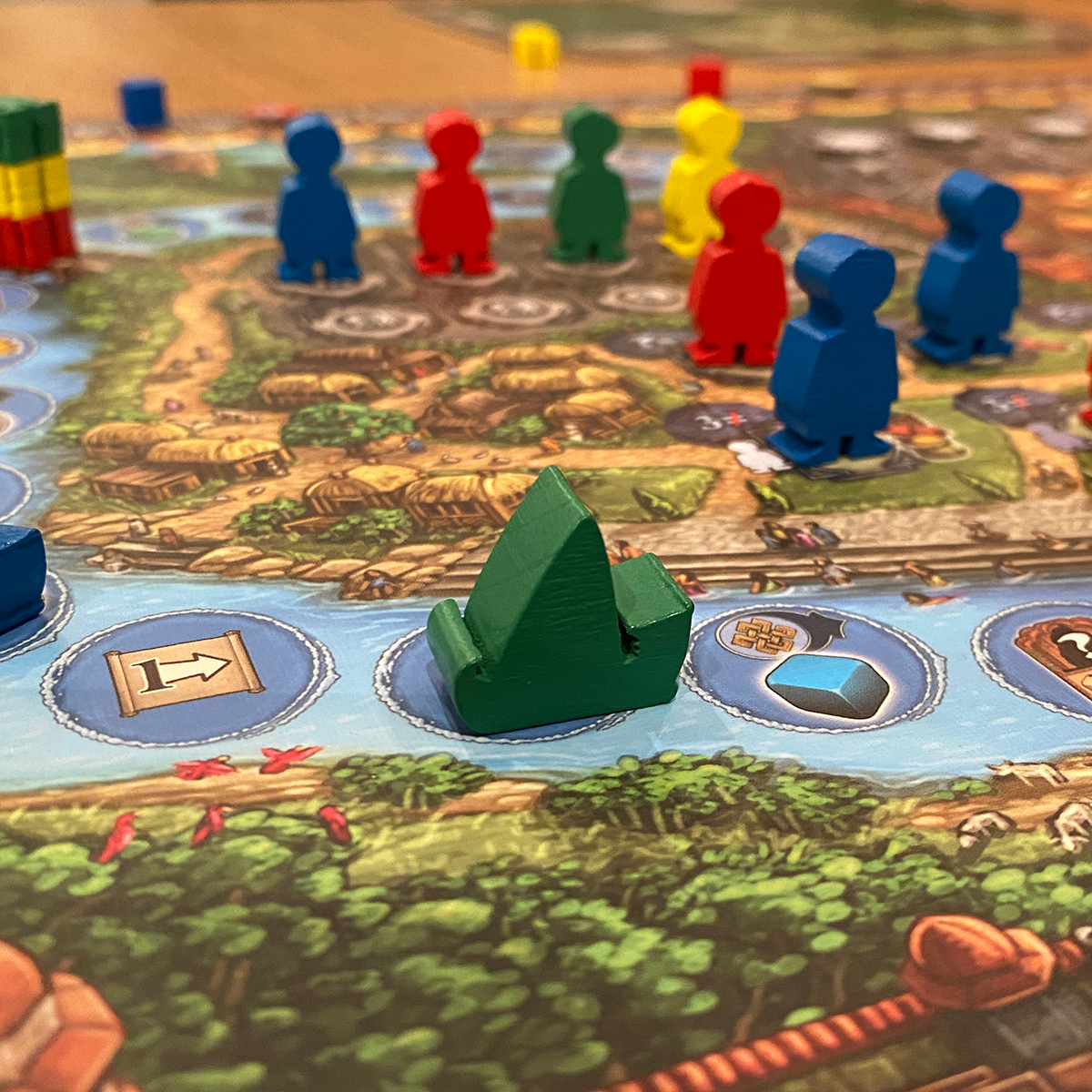
©boardgamereview.co.uk
Table Presence
The board is one of the busiest you will see. It is a bombardment on the visual senses and a little daunting. I like it now and it all makes sense, but I remember when I first saw it, I was like… woah that’s a lot! Bearing in mind it was released in 2017, for me the styling feels more dated than that. I almost feel like I shouldn’t like it as much as I do!
The wooden components are all fine, as is the cardboard first player token. The tiles for the province board match the overall artwork nicely. I really like the backs of these tiles and I sometimes wish this palette was used more throughout the game.
The dice are satisfyingly chunky without being over the top. They are good translucent colours too. I’m a big fan of these D6s.
When you are done playing, it all packs away nicely in the plastic insert.
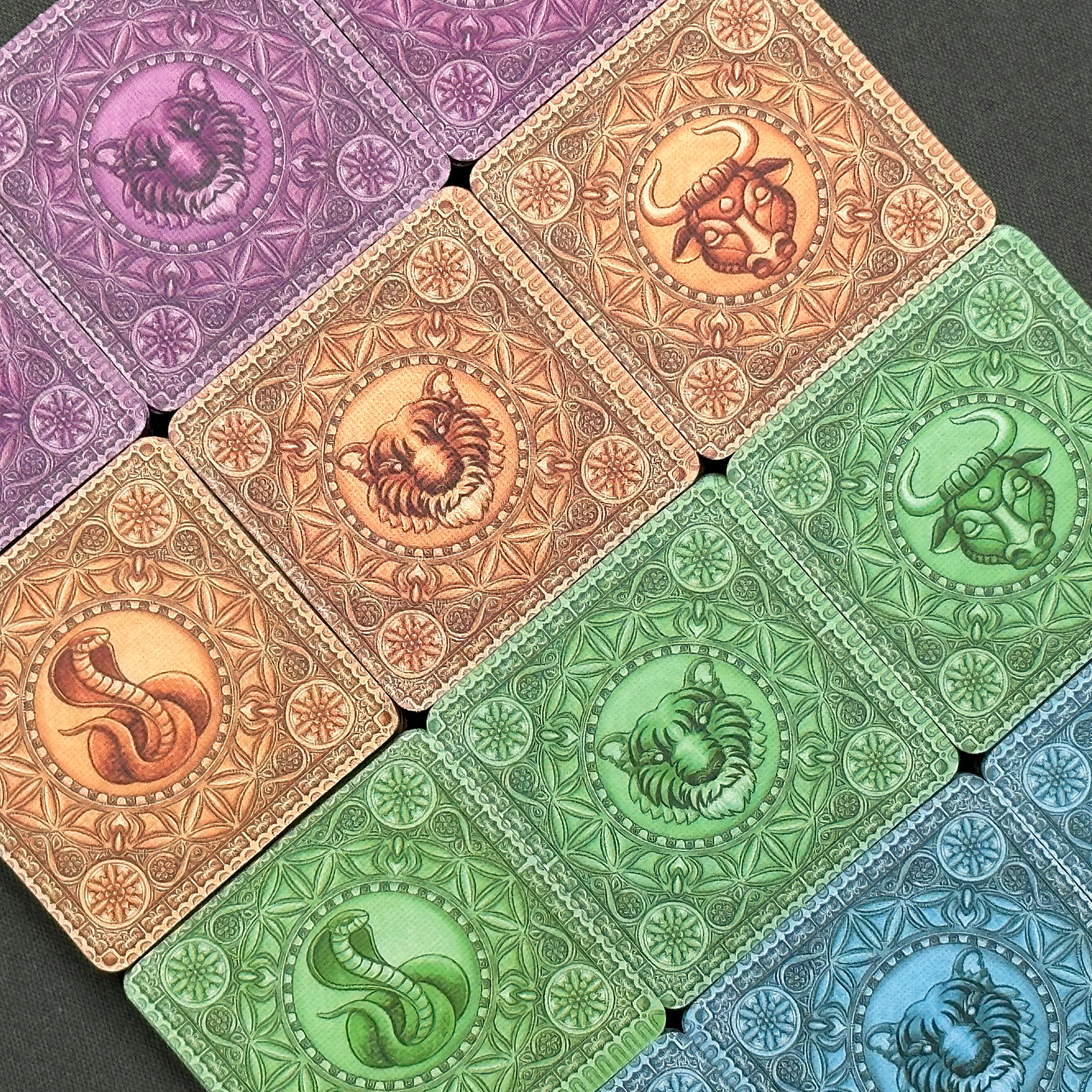
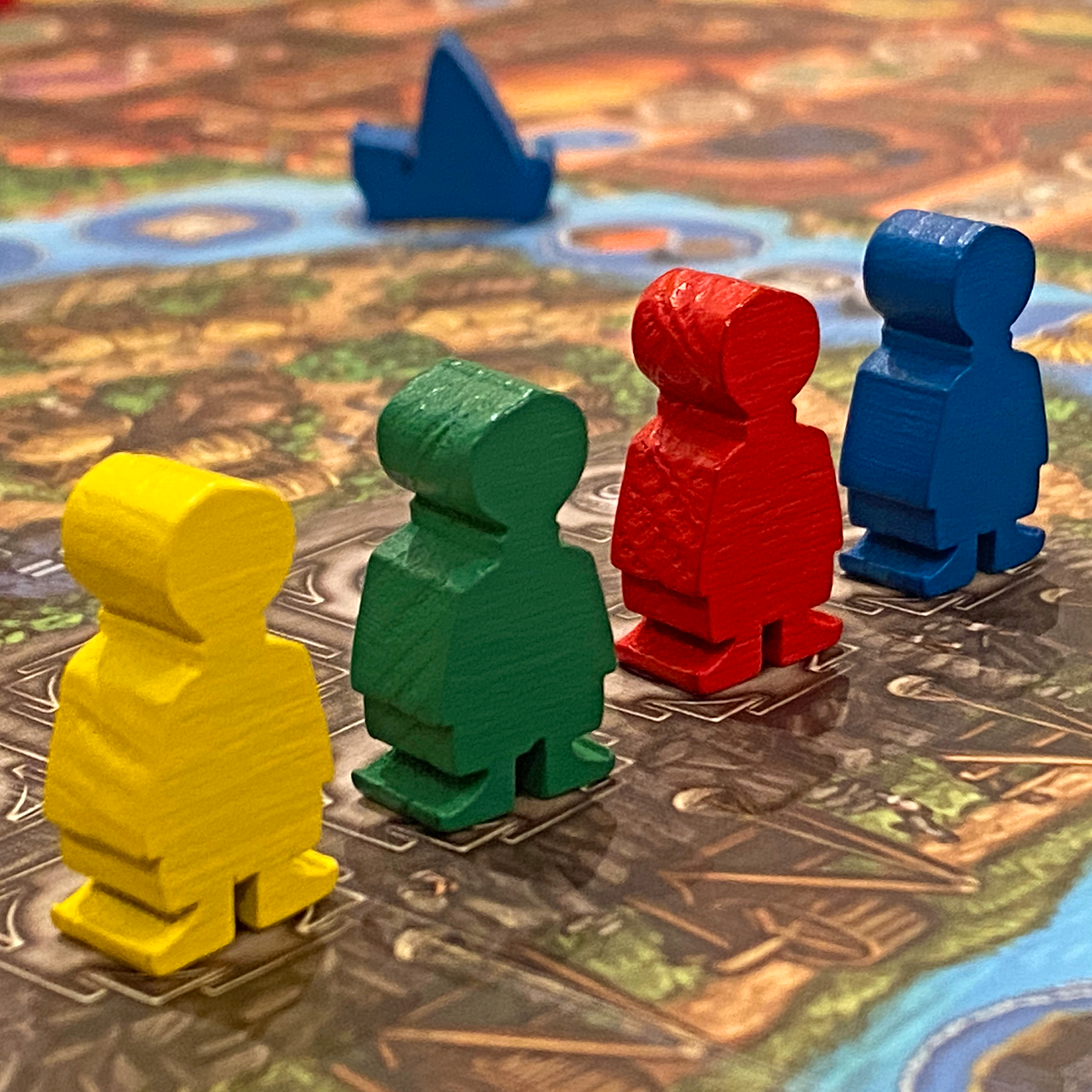
©boardgamereview.co.uk
Rulebook
There is a little ambiguity around the ‘Master Builder’ action whereby you can overlay a tile on top of a previously laid one. In the English rules it states you do not get the yield bonuses again, suggesting if it hadn’t been previously activated you would get the bonus. The German rules state: “Du erhältst beim Überbauen nie Sondererträge” which translates as “You never receive special yields when overbuilding” which seems more explicit. Bearing in mind it was a German game from a German publisher, that’s how I play it. I rarely use the Master Builder anyway!
Otherwise the rulebook is pretty good, albeit just as busy as the board! I haven’t compared and contrasted all the English and German text, so maybe there are other parts I’m playing wrong. Perhaps I should caveat that this is a review of the English rulebook version!
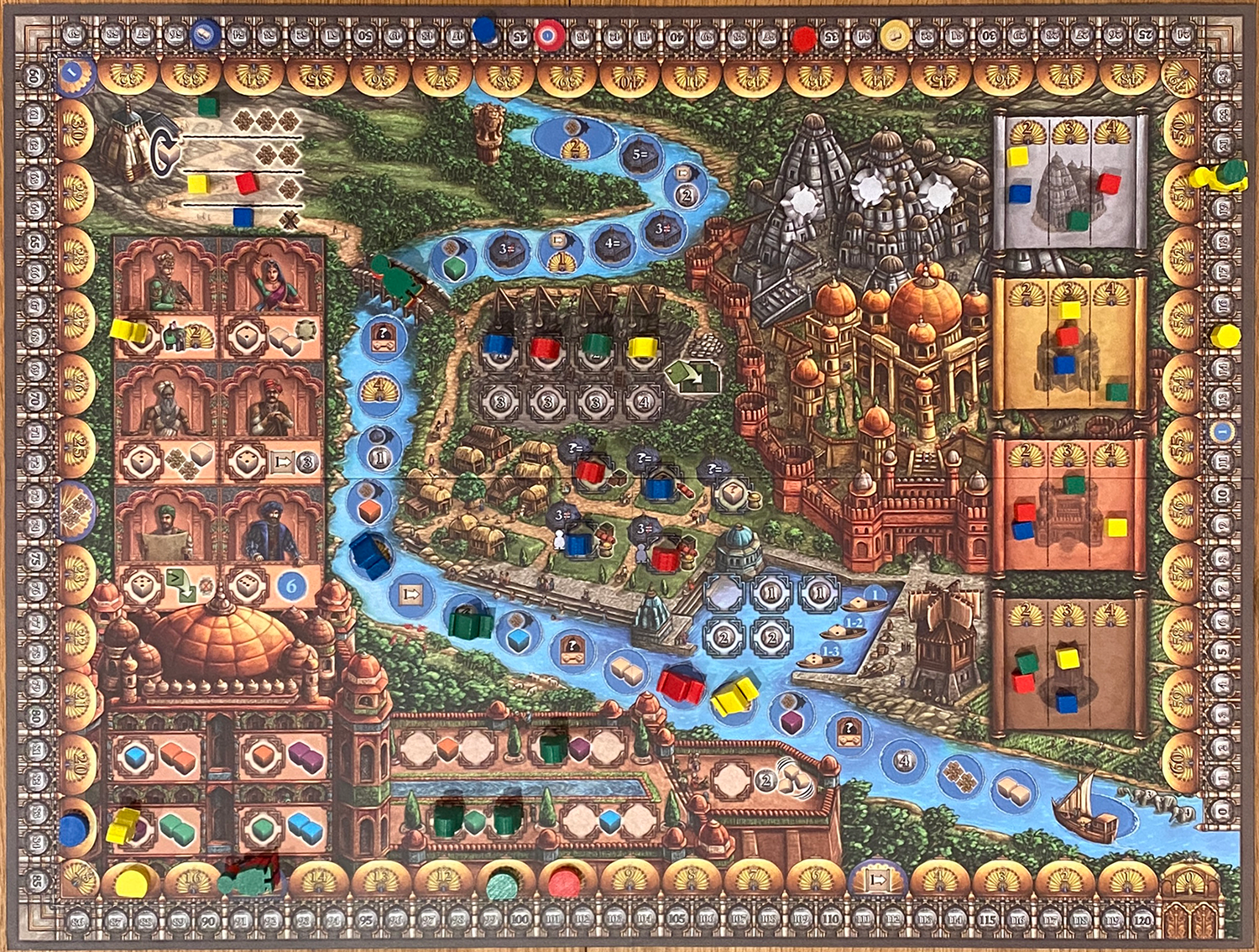
©boardgamereview.co.uk
Final thoughts on Rajas of the Ganges
There are some games that I will never part with and that I will always jump at the opportunity to play. Rajas of the Ganges is one of those games. I adore the worker placement and race to trigger the end of the game. While you may feel like you are in a Paula Abdul song, permanently taking two steps forward and then one step back, progress is made and the game ramps up in a really good way as the finish line draws in.
Dice in games can be a put-off for many, but there is enough options to compensate for not getting ideal rolls. They might still frustrate and force you to adapt to secondary options, the nice thing is this board game gives plenty of ways to utilise your rolls and slightly mitigate them. The worker placement can be equally frustrating when someone steals the spot you were about to claim. For me, this adds to the strategy of the game, rather than deter me from enjoying it.
Rajas of the Ganges is an excellent game at all player counts. If you get the opportunity, I whole-heartedly recommend you trying it!
Key Facts
Number of players: 2 to 4
Board Game Review Recommended Age: 12+
Publisher’s Recommended Age: 12+
Playing Time: 60 minutes
Setting Up and Take Down Time: 3 minutes
Designers: Inka and Markus Brand
Publisher: HUCH!
RRP: £46.99
Summary
Rajas of the Ganges is one of my all time favourite games. It hits my table time and time again and I enjoy every single play of it.
-
Artwork and Components
-
Complexity
-
Instructions
-
Interaction
-
Value for Money
Overall
Pros
- Good strategy
- Lots of dice rolling
- Often close with thrilling final turns
- Variants included in the box
Cons
- Board looks complicated and arguably dated
- Some iconography to learn
- Rulebook is busy and is ambiguous around the master builder option
- Seems to be hard to find at the moment
Need more games?
If you already own Rajas of the Ganges and enjoy it, or are looking for other inspiration, you might also like these similar games:
- Raiders of the North Sea
- Viticulture
- Wreck Raiders
- Century Golem: An Endless World
Buy Rajas of the Ganges
If you want to buy Rajas of the Ganges after reading our review click on one of our affiliate links below (note there has been no affiliate links until this point)
Reviewer’s Note
For clarity: we don’t get paid for our reviews. We paid for this game with our own money. We have tried not to let this affect our review in any way.
We may however earn a tincy wincy commission if you buy a game having clicked one of our affiliate links like the one above… this hopefully gives us a bit of pocket money towards hosting costs and new games to review!
As an Amazon Associate I earn from qualifying purchases.
Board Game Review is a brand ambassador for Out of Town Games.
We also are an affiliate of Board Game Prices, a price comparison website for Board Games.
These affiliate advertising programs are designed to provide a means for sites to earn advertising fees by advertising and linking to their websites.
